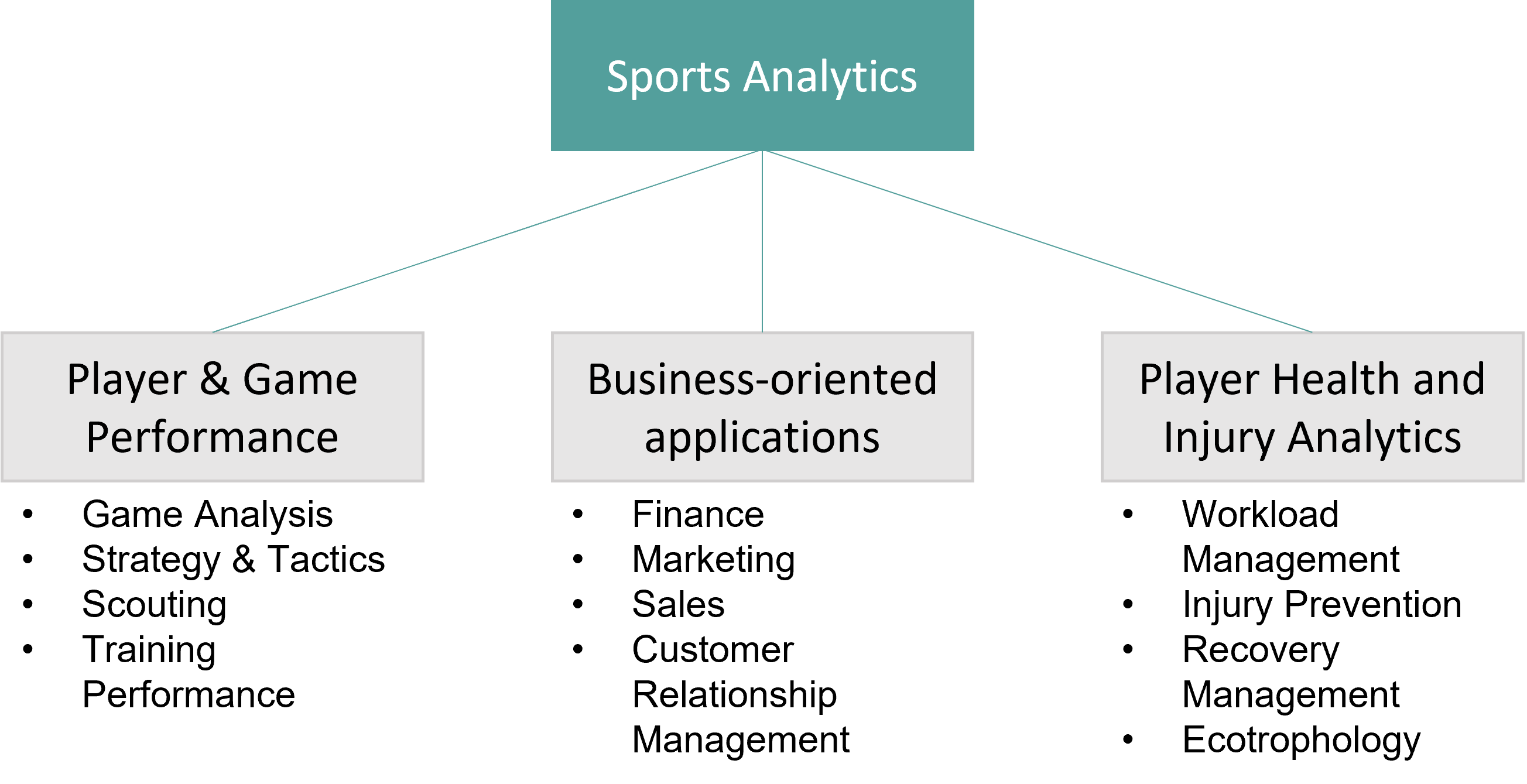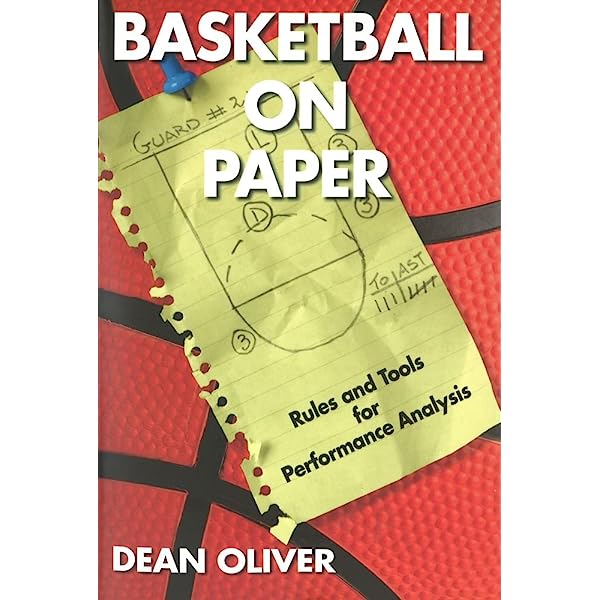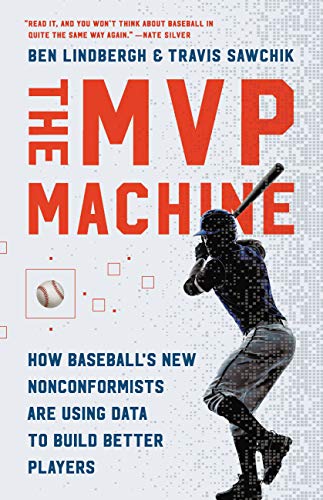Introduction
In this dynamic era of sports, the role of sports analysts has never been more crucial. Uncover the latest trends, cutting-edge technologies, and innovative methodologies shaping sports data analysis. From game strategies to athlete performance optimization, sports analytics is revolutionizing how teams and athletes prepare, compete, and succeed. In this article, we will discuss the intricacies of sports analytics, exploring its impact on sports outcomes, fan engagement, and the ever-evolving landscape of athletic excellence. Whether you’re a seasoned sports analyst or a curious enthusiast, get ready to unlock the secrets behind sporting triumphs using the power of data-driven insights!
Table of contents
- What is Sports Analytics?
- How is Sports Analytics Data Useful?
- Role of Data Science in the Sports Industry
- How Different Sports Use Sports Analytics Data?
- How Do Fans Use Sports Analytics Data?
- Significant Developments in the Sports Analytics Industry
- How to Become a Sports Analyst?
- Job Description of a Sports Analytics Professional
- Top 5 Books to Read on Sports Analytics
- Conclusion
- Frequently Asked Questions
What is Sports Analytics?
Sports analytics involves collecting, analyzing, and interpreting data to gain insights into athletic performance, team strategies, and player dynamics. With advancements in technology and the growing popularity of sports, data analytics has emerged as a game-changer in the sports industry. It provides teams with valuable information to make data-driven decisions and improve performance. Likewise, fans benefit from data analytics, gaining deeper insights into their favorite sports and players.
How is Sports Analytics Data Useful?
Here are some ways in which sports analytics is useful:

Decision Making
In decision-making, sports analytics data provides critical insights into past performances, player statistics, and game scenarios. Coaches and managers can use this information to make informed decisions about strategy, substitution patterns, and game plans, ultimately increasing the team’s chances of success.
Player Selection
Data analytics plays a crucial role in player selection by objectively assessing performance and potential. Scouts and management can identify talented players who align with the team’s playing style and needs by analyzing performance metrics and comparing them with team requirements.
Player Mechanics Training
Sports analytics data enables sports scientists and trainers to analyze players’ biomechanics during training sessions and games. This information helps identify areas for improvement in players’ techniques and form, allowing for personalized training programs to optimize performance and reduce the risk of injuries.
Training Schedules
Data analytics is instrumental in optimizing training schedules for athletes. By analyzing workload data, recovery metrics, and performance trends, coaches can design training programs that balance intensity and rest periods, enhancing performance and reducing chances of overtraining or injuries.
In-Game Tactical Adjustments
During games, sports analytics data offers real-time insights that aid in making tactical adjustments. Coaches can assess player and team performance, track opponent patterns, and identify areas of weakness, enabling them to make strategic decisions and adapt their tactics to gain a competitive edge.
Injury Prevention and Management
Sports analytics data helps identify injury patterns and risk factors among athletes. By analyzing data on player workload, biomechanics, and medical history, teams can implement preventive measures and create personalized recovery plans, reducing the likelihood of injuries and keeping players fit and healthy.
Game Strategy and Tactical Analysis
Coaches use sports analytics data to gain insights into opponents’ playing styles, strengths, and weaknesses. This information enables them to devise effective game strategies and make in-game tactical adjustments based on real-time data, increasing the chances of success on the field.
Performance Enhancement
Sports analytics data assists in identifying areas of improvement for individual players and the team as a whole. By analyzing various performance metrics, coaches can target specific skills and fitness components for enhancement, leading to better performance and competitive advantage.
Fan Engagement and Experience
Sports analytics data helps sports organizations understand their fans better. By analyzing fan behavior, preferences, and engagement patterns, teams can tailor marketing campaigns, social media content, and fan experiences to create a stronger connection and foster loyalty among supporters.
Contract Negotiations and Salary Cap Management
Data-driven analysis is crucial during contract negotiations and salary cap management. Sports analytics data evaluates player performance, potential, and market value, ensuring fair athlete compensation and optimizing the team’s budget allocation to build a well-balanced and competitive roster.
Role of Data Science in the Sports Industry
The role of data science in the sports industry has dramatically transformed how teams, athletes, and organizations operate. As data has become more readily available and technology has advanced, data science has emerged as a powerful tool in optimizing performance, making data-driven decisions, enhancing fan experiences, and driving revenue generation.
Performance Optimization
Data science extensively optimizes athlete performance in various sports. Athletes wear sensors and trackers during training and games, generating vast amounts of data on their movements, heart rate, speed, and other crucial metrics. Data scientists analyze this information to identify patterns and trends that can be used to enhance training regimens, improve techniques, and reduce the risk of injuries. For instance, in basketball, data science can reveal a player’s shooting accuracy from different court areas, helping coaches design strategies that capitalize on their strengths.
Injury Prevention
Injury prevention is a critical area that data science significantly impacts. Sports scientists can detect early signs of potential injuries by analyzing player data and tracking their physical condition. This enables coaches and medical staff to implement preventive measures, adjust training loads, and design individualized recovery plans to keep athletes at their peak performance and minimize time spent off the field.
Game Analysis and Strategy
Coaches and teams now rely heavily on data science to analyze games and develop winning strategies. By breaking down opponent gameplay, studying player movements, and evaluating past performances, teams can devise tactics that exploit weaknesses and counter their adversaries’ strengths. This data-driven approach has revolutionized game preparation, leading to more dynamic and tactical contests.
Fan Engagement and Experience
Data science enhances fan engagement and experience. Sports organizations collect data from various sources, such as social media, ticket sales, and merchandise purchases, to gain insights into fan preferences and behavior. This information allows teams to create personalized fan experiences, deliver targeted content, and tailor marketing campaigns, increasing fan loyalty and deeper connections between fans and their favorite teams.
Revenue Generation
In the business aspect of sports, data science is instrumental in revenue generation. Sports organizations can identify lucrative sponsorships, partnerships, and targeted advertising opportunities by analyzing fan demographics, purchasing patterns, and engagement metrics. Additionally, data-driven pricing strategies can optimize ticket sales and merchandise revenue.
Scouting and Player Recruitment
Data science has revolutionized the scouting and recruitment process in sports. Through data analytics, teams can identify talent from a global pool of athletes based on performance metrics and potential. This helps in making more informed decisions during drafts and transfers, leading to the creation of competitive and successful teams.
Sports Betting and Fantasy Sports
The rise of sports analytics has also significantly impacted sports betting and fantasy sports. Betting companies and fantasy platforms use data science to provide odds and rankings, which fans use to make informed decisions in their betting and fantasy sports activities.
How Different Sports Use Sports Analytics Data?
Sports analytics has become a critical component in various sports, helping teams and athletes gain a competitive edge. Let’s explore how different sports utilize sports analytics data to enhance performance and make informed decisions:
Cricket
In cricket, data analytics is extensively used to assess player performance, understand pitch conditions, and analyze opposition strategies. This data-driven approach enables team staff to train players effectively, identify strengths and weaknesses, and optimize batting and bowling lineups for specific conditions. During matches, real-time analytics helps in making strategic decisions such as field placements, bowling changes, and reviewing opposition batsmen’s weaknesses.
Football / Soccer
Football clubs use data analytics to study player movements, passing patterns, and shot accuracy. By analyzing these metrics, coaches refine tactics and improve team cohesion. Data-driven insights enable teams to identify the most effective playing style and formation for their squad. Moreover, data analytics is instrumental in talent scouting, helping clubs identify potential transfer targets based on performance metrics.
Basketball
Basketball teams rely on data analytics to optimize offensive and defensive strategies. They analyze player positioning, shot selection, and defensive statistics to identify areas of improvement and enhance team dynamics. Advanced analytics plays a significant role in identifying player efficiency, making data-driven decisions during games, and understanding the impact of different lineups.
Baseball
Baseball teams utilize data analytics to analyze pitching patterns, hitting performance, and defensive shifts. This data provides valuable insights for in-game decisions, such as pitch selection and defensive positioning. Data-driven approaches also guide player development strategies, aiding coaches in identifying areas for improvement and enhancing player performance.
Hockey
In hockey, data analytics is crucial for devising winning strategies. Teams analyze player movements, shot accuracy, and power play efficiency to optimize offensive and defensive tactics. Sports scientists also leverage analytics to monitor player conditioning, prevent injuries, and design personalized training programs to enhance players’ on-ice performance.
Tennis
Data analytics has found its way into tennis as well. Tennis players and coaches use analytics to study opponents’ playing styles and patterns. This data assists in developing match strategies and understanding the strengths and weaknesses of their rivals. Furthermore, tennis players can track their own performance metrics to identify areas for improvement and make data-driven adjustments to their game.
How Do Fans Use Sports Analytics Data?
Sports analytics data has become a game-changer for sports teams and fans, transforming how they engage with their favorite sports. Here’s how fans use sports analytics data to enhance their overall sports experience:
Fantasy Sports
Fantasy sports have witnessed an exponential rise in popularity, and data analytics lies at the core of this phenomenon. Fans participating in fantasy leagues use sports analytics data to build their dream teams. They carefully analyze player statistics, past performance, and upcoming match-ups to select players for their fantasy roster strategically. By leveraging data-driven insights, fans aim to outsmart their opponents and compete for virtual championships in their fantasy leagues. This data-driven gameplay adds a layer of excitement and competitiveness to the fan experience.
Betting
Data analysis has significantly influenced sports betting practices. Fans interested in sports betting use sports analytics data to make informed decisions when placing their bets. Fans can assess the probabilities of different outcomes by analyzing player and team performance, injuries, weather conditions, and historical data. Sports analytics provides a scientific and data-driven approach to betting, increasing the chances of making successful wagers and potentially winning bets.
Social Media Engagement
Sports analytics data is widely shared on social media platforms, creating an interactive space for fans to engage with insights and discussions about their favorite sports. Sports organizations, analysts, and fans share statistical nuggets, player comparisons, and data-driven stories, sparking fan debates and conversations. Social media has become a hub for fan engagement, where data-driven insights fuel excitement and anticipation around upcoming games and events. Fans can contribute to discussions and showcase their analysis, further enriching the sports community on social media.
Significant Developments in the Sports Analytics Industry
The sports analytics industry has witnessed remarkable growth and transformation over the past few decades. From its early stages of rudimentary data collection to the current sophisticated data-driven decision-making processes, the establishment and evolution of this industry have been shaped by several significant developments:
Emergence of Moneyball
One of the seminal events that accelerated the sports analytics industry’s growth was the publication of Michael Lewis’s book “Moneyball” in 2003. The book highlighted the data-driven approach of the Oakland Athletics baseball team, led by Billy Beane. The team utilized advanced analytics to identify undervalued players based on their on-base percentage and other statistical metrics. This successful implementation of analytics in baseball drew attention to the potential of data-driven decision-making in sports.
Advancements in Technology
The rapid advancements in technology, particularly in data collection and analysis, have played a vital role in establishing and evolving sports analytics. The availability of wearable sensors, GPS tracking devices, and high-speed cameras has enabled the collection of vast amounts of real-time data during games and training sessions. This data explosion has opened new possibilities for in-depth analysis and predictive modeling.
Integration of Data Science and Statistics
As the sports analytics industry evolved, integrating data science and advanced statistical methods became crucial for extracting meaningful insights from complex datasets. Data scientists, statisticians, and sports analysts work hand in hand to develop sophisticated algorithms and predictive models that aid teams in decision-making, talent scouting, and game strategy development.
Rise of Sports Analytics Companies
A significant development in the sports analytics industry has been the emergence of specialized sports analytics companies. These companies offer advanced data analytics services, software solutions, and consulting to sports organizations, helping them leverage data to optimize performance, engage fans, and drive revenue generation.
Establishment of Sports Analytics Departments
In recent years, sports organizations have recognized data analytics’s importance and established dedicated sports analytics departments within their teams. These departments comprise data analysts, sports scientists, and technology experts who work collaboratively to harness data for strategic decision-making, player development, and fan engagement.
Integration of Artificial Intelligence and Machine Learning
Artificial Intelligence (AI) and Machine Learning (ML) have significantly impacted the sports analytics industry. These technologies allow for more advanced predictive analytics, player performance forecasting, and injury risk assessment. AI-powered systems can process vast amounts of data and identify patterns that would be challenging for humans to recognize, further enhancing the data-driven approach in sports.
Growth of Sports Analytics Education
The demand for skilled sports analytics professionals has established specialized educational programs and certifications. Universities and institutions now offer sports analytics, data science, and sports performance analysis courses, preparing a new generation of professionals to contribute to the industry.
How to Become a Sports Analyst?
Follow these steps to become a sports analyst in 2023
- Education and Qualifications
Obtain a bachelor’s degree in statistics, data science, computer science, mathematics, or sports analytics. Some universities offer specialized sports analytics or sports science programs focusing on data analysis.
- Develop Analytical Skills
Acquire proficiency in statistical analysis, data mining, and data visualization techniques. Learn programming languages, such as Python or R, commonly used in data analysis. Familiarize yourself with data management and database systems.
- Gain Sports Knowledge
Develop a strong understanding of various sports, their rules, and gameplay nuances. Stay updated with current trends and developments in the sports industry.
- Practical Experience
Seek internships or entry-level positions with sports teams, organizations, or analytics companies. Practical experience is crucial to apply your knowledge in real-world scenarios. To build your portfolio, offer to work on sports analytics projects or analyses for local teams, clubs, or sports organizations.
- Specialize and Network
Consider specializing in a specific sport or area within sports analytics, such as player performance analysis, injury prevention, or game strategy. Attend sports analytics conferences, workshops, and networking events to connect with industry professionals and stay updated with the latest advancements.
- Certifications and Online Courses
Pursue relevant certifications in data science, sports analytics, or specific analytics tools to add credibility to your profile. Take advantage of online courses and platforms that offer sports analytics training and skill development.
- Stay Inquisitive and Proactive
Embrace a problem-solving mindset and continuously seek ways to improve your analytical abilities. Stay curious and explore new sports analytics technologies, tools, and methods.
- Build a Portfolio
Create a portfolio showcasing your projects, analyses, and data-driven insights. This will demonstrate your skills and expertise to potential employers.
Job Description of a Sports Analytics Professional
Sports analytics professionals are responsible for analyzing sports data to provide insights that help teams, coaches, and organizations make data-driven decisions. Their primary focus is to enhance team performance, optimize strategies, and improve overall player and team efficiency. Here are the key aspects of their job description:
Technical Proficiency
- Collect and analyze sports-related data, including player performance statistics, game footage, and injury records.
- Utilize statistical analysis and data modeling techniques to identify patterns, trends, and correlations within the data.
- Develop and implement predictive models to forecast player performance, game outcomes, and other relevant factors.
- Use data visualization tools to present analytical findings and insights in a clear and understandable manner.
- Employ machine learning and artificial intelligence algorithms to automate data processing and analysis.
- Work with various data sources, including wearable technology, GPS trackers, and video analysis systems.
Soft Skills
- Strong analytical and problem-solving skills to interpret complex data and derive actionable insights.
- Effective communication skills to present findings and recommendations to coaches, players, and management.
- Collaborative and team-oriented mindset to work alongside coaches, scouts, and other sports professionals.
- Attention to detail to ensure accuracy and reliability of data analysis.
- Ability to work under pressure and meet tight deadlines, especially during intense sports seasons.
Domain Knowledge
- A solid understanding of sports, including game rules, strategies, and player roles.
- Familiarity with sports performance metrics and statistical analysis methods specific to various sports (e.g., player efficiency rating in basketball, on-base percentage in baseball).
- Knowledge of sports industry trends, player evaluation techniques, and game strategy optimization.
Experience Required
- Entry-level sports analytics positions may require a bachelor’s degree in statistics, data science, computer science, or a related field.
- For more advanced roles and leadership positions, a master’s degree or higher education and several years of sports analytics experience are often preferred.
- Experience working with sports teams, organizations, or in sports-related research projects can significantly enhance a candidate’s profile.
- Demonstrated experience with data analysis tools (e.g., Python, R, SQL) and data visualization software (e.g., Tableau, Power BI) is desirable.
Top 5 Books to Read on Sports Analytics
“Moneyball: The Art of Winning an Unfair Game” by Michael Lewis
This book delves into the world of baseball and how the Oakland Athletics’ manager, Billy Beane, used data analytics to build a successful team despite a limited budget. “Moneyball” explores the team’s use of sabermetrics (advanced statistics) to identify undervalued players based on their on-base percentage and other metrics. The book highlights the revolution of sports analytics in baseball and its impact on team management and player evaluation.
“Sports Analytics: A Guide for Coaches, Managers, and Other Decision Makers” by Benjamin C. Alamar
This guide provides a comprehensive overview of sports analytics, focusing on how coaches, managers, and decision-makers can leverage data to gain a competitive advantage. It covers various topics, including player evaluation, team strategy, injury prevention, and fan engagement. The book combines theoretical concepts with practical examples and case studies, making it a valuable resource for sports professionals seeking to integrate analytics into their decision-making processes.
“The Wages of Wins: Taking Measure of the Many Myths in Modern Sport” by David J. Berri, Martin B. Schmidt, and Stacey L. Brook
“The Wages of Wins” challenges commonly held beliefs in the sports industry, including the myths surrounding player salaries and their impact on team success. The authors use statistical analysis to debunk misconceptions about player performance and salary allocation. The book provides a critical perspective on how sports analytics can help identify undervalued players and make informed decisions based on data-driven insights.
“Basketball on Paper: Rules and Tools for Performance Analysis” by Dean Oliver
Focused specifically on basketball, this book introduces the concept of “Four Factors” that contribute to team success – shooting, turnovers, rebounding, and free throws. Dean Oliver, a prominent basketball analytics pioneer, delves into advanced statistical methods and performance analysis tools for coaches and analysts. “Basketball on Paper” is a foundational resource for those interested in basketball analytics and understanding the key metrics that drive success in the sport.
“The MVP Machine: How Baseball’s New Nonconformists Are Using Data to Build Better Players” by Ben Lindbergh and Travis Sawchik
“The MVP Machine” explores how baseball has evolved with the advent of sports analytics and player development techniques. The book delves into the science of player training, including biomechanics, motion analysis, and data-driven coaching methods. It examines how data and technology transform player development and revolutionize the approach to building successful baseball players.
Conclusion
Sports analytics has transformed the sports industry, revolutionizing team strategies, player performance, and fan engagement. As the data-driven approach becomes a fundamental aspect of sports organizations worldwide, aspiring professionals can significantly impact this dynamic field. By pursuing relevant education and gaining hands-on experience, they can become invaluable assets in shaping the future of sports through analytics.
As technology advances, the role of sports analytics will undoubtedly become even more critical in elevating sporting excellence. To master the essential data analytics techniques and implement them effectively in sports, look no further than Analytics Vidhya’s blackbelt plus program. Join now and unlock a world of opportunities to excel in sports analytics, harnessing the power of data to revolutionize the game!
Frequently Asked Questions
A. Sports analytics is the application of data analysis and statistical techniques to sports-related data, aiming to gain insights and make informed decisions to improve player performance, team strategies, and fan engagement.
A. A sports data analyst collects, processes, and interprets data from various sources, such as player statistics, match results, and fan behavior. They use data-driven insights to aid teams and organizations in making informed decisions.
A. Sports analytics finds application across various industries, including professional sports leagues, sports media, sports technology companies, sports betting, and fantasy sports platforms.
A. Different types of sports analysis include performance analysis (assessing player and team performance), tactical analysis (studying game strategies), injury analysis (identifying injury patterns), and fan engagement analysis (understanding fan behavior and preferences).









